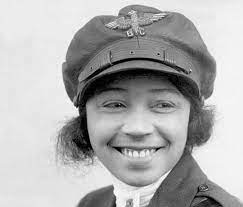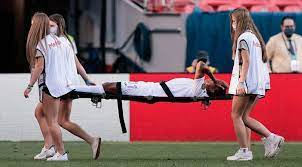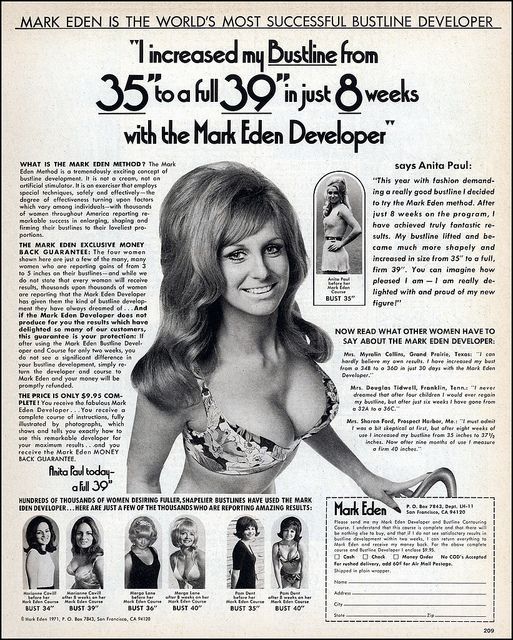Dina’s Diner, June 28, 2021
WIGGING OUT
I saw an interesting item in a Yahoo.com feed recently with the tagline Wigs for Kids. It turned out to be a website for a wig company but it had a couple of videos about wigs specially designed for children.
When I saw the Yahoo item, I didn’t immediately think of children with chemotherapy-induced baldness or alopecia, the hair-reducing affliction. This is the obvious reason a child might need or want a wig. I thought perhaps there might be a place for wigs for kids who are, say, going to a dress-up event like a birthday party, wedding, graduation, or prom, etc.
I poked around the internet looking for any references of children wearing wigs in “normal” circumstances but came up empty. When I was in high school in the long hair days of the early ’70s, some of the cooler boys began wearing “short-hair” wigs to stay within the school’s guidelines for hair length. This let them elude demerits and detention without cutting their natural long hair. Other than that personal remembrance, I couldn’t find any non-health-related instances of boys or girls wearing wigs to play or go to school.
The youth beauty pageants seem to be a place where wigs (or hair add-ons) are common. I don’t think those ten year old girls are getting their own hair lacquered into pageant bouffants. Then there is the phenomenon of Womanless Beauty Pageants where middle-school and high school boys dress in drag in an annual showcase. Interesting to note that many of the boys wear full glamour wigs while some just go with cheap Halloween wigs. Do the parents of those with better wigs shell out just so their boy will look better in drag? Maybe Mom has a wig squirreled away in the closet for kinky hijinks of her own. [Editor’s Note: Or maybe dad has one.]
I did notice one thing while looking at some sites for chemo and alopecia sufferers: those two health crises are not discriminating by gender. The wig sites show both boys and girls, men and women wearing wigs that will help them feel more comfortable in the world.
KNOCKED BACK ON THEIR HEELS
The New York Times Style section had an article headlined High Heels Are Ready to Stomp Out Crocs and Birks. The item appeared on the Times website on June 7, 2021.
I had a Diner entry in April (also culled from the Times) about one woman’s desire to get back into high heels as the Covid protocols began lessening. The recent Times article tells us that the urge to renew wardrobes–including, if not especially–the shoe closet is not an isolated anecdote. The Times reports, “Google searches of ‘high heels,’ one reliable indicator of demand, have climbed in recent weeks, as consumers presumably scoured the marketplace for shoes to wear to weddings, proms, graduations and other formal events.”
No less a personage than Manolo Blahnik his own self said, “Women have missed the joy of dressing up. Women cannot be without their high heeled shoes. They never grow bored.” Blahnik is opening new stores in Manhattan and East Hampton, New York to capitalize on the resurgence. The Times reported, “Four-inch heels have been a company mainstay” said Kristina Blahnik, Mr. Blahnik’s niece and the brand’s chief executive. “But we’re bringing back our five-inch heels, which we haven’t done in years.” The article talked to other designers and high-end retailers who all confirmed the uptick in demand for fashionable high heels.
Despite the constant presence and outspokenness of critics of high heels through the decades, it’s obvious that some women simply identify the high heel with elegance, fun, and even professionalism in the workplace. One interviewee said that Vice President Kamala Harris’ high heels were akin to male figures’ neckties.
Some of the women admitted to the Times that they wore their high heels at homes sometimes just because they missed them and were bored with home-based slippers, flip flops, etc. I am put in mind of all the crossdressers out there who wear high heels in the house for much the same reason: to spice things up a bit and beat out the humdrum. And even if your high heels never leave the wall-to-wall carpet of your own living space, you will soon be joined by many ladies out and about clicking down the sidewalks in their new or rediscovered high heels. Bring ‘em on.
SHE WAS A ‘FLY’ GIRL
I came across an internet entry somewhere about early aviation pioneer Bessie Coleman. The thing that caught my eye was how Bessie seemed to have a ‘modern’ face in a very old photograph.
You know how people in old photos look somehow different than we do today? It goes beyond modes of dress or hairstyle. People, it always seemed to me, just looked different in those old photos. Bessie’s face seemed, to me, perfectly contemporary. Then I read her story. I like stories about inspirational women even if there is no crossdressing element.
[This information comes from a Wikipedia entry.] She was born in 1892 and became interested in flying after hearing stories of the aviators in World War I. She wanted to become a pilot but flying schools did not accept women or people of color at that time. She was encouraged by a benefactor to go overseas to study in France. Mind you, this was a huge step to take for a young black woman traveling into an unknown future in the post-war year of 1920.
But become a pilot she did. It is said she learned to fly in a biplane with a single rudder stick between her legs and foot control pedals. “With the age of commercial flight still a decade or more in the future, Coleman quickly realized that in order to make a living as a civilian aviator she would have to become a “barnstorming” stunt flier, performing dangerous tricks in the then still early technology of airplanes for paying audiences. But, to succeed in this highly competitive arena, she would need advanced lessons and a more extensive repertoire.” Again, American flight schools denied her training despite her growing fame and she traveled back to France. She also trained with Anthony Fokker, the German plane designer while she was in Europe.
By 1922, she was back in the States and a bona fide attraction at flying shows. “She also quickly gained a reputation as a skilled and daring pilot who would stop at nothing to complete a difficult stunt. In Los Angeles, she broke a leg and three ribs when her plane stalled and crashed on February 22, 1923.” Bessie also used her platform to advocate for others like herself. “Committed to promoting aviation and combating racism, Coleman spoke to audiences across the country about the pursuit of aviation and goals for African Americans. She absolutely refused to participate in aviation events that prohibited the attendance of African Americans.”
Bessie was killed in a flying accident, being thrown from a spiraling plane, in 1926 at only 34 years of age. She is quoted as saying, “The air is the only place free from prejudices.”
TAKING A DIVE FOR A GOOD CAUSE
I saw a funny story from the world of international soccer on June 3, 2021. The headline on a site called The18.com was CONCACAF Stretcher Girls Steal the Show from USA-Honduras Nations League Clash. CONCACAF stands for Confederation of North, Central America, and Caribbean Association Football. They were having a big tournament when the Honduran team seemed to suffer a number of debilitating injuries requiring stretchers to be brought out.
According to the coverage, the game between Honduras and the U.S. team was sort of a snoozer. The crowd became rowdy and the reporter writes, “thousands of fans packed into Empower Field searched for almost any reason to cheer. You can imagine the reaction from a majority drunk crowd when four young, blonde girls in shorts trotted out onto the field with a stretcher. The Honduran players must have had their hearts taken by the Concacaf stretcher girls as these dudes spent more time on the ground than on their feet. I lost count, but I believe Honduras requested the stretcher a minimum of five times.” The reporter also wrote, “When the crowd only gets excited about someone holding a stretcher you know there’s a problem.”
I don’t follow soccer and I forget how I even saw this item about the game. I do know that professional soccer players get a lot of heat for taking dives trying to draw penalties against their opponents. In this case it seems the players just wanted to see more of their bare-legged stretcher girls. The silliness received many mentions on Twitter. A female observer tweeted, “Anyone else confused as to why a girl in her underwear is carrying this player off on a stretcher?” “Is Honduras flopping just to see those stretcher girls?” someone questioned. Another female tweeted, “When I grow up I want to be a Concacaf stretcher girl.” Another posted a “heatmap” of the playing field with a dark red section where the stretcher girls had picked up a player.
Someone in charge finally relieved the female stretcher carriers and replaced them with men. The crowd booed heartily when they made their first appearance. Magically, there were no more “injuries” after the girls were replaced on stretcher duty.
As Mel Brooks wisely noted, “It’s good to be the King!” RuPaul might tell us “It’s good to be a Queen!” And at least in one instance, “It’s good to be a stretcher girl.”
36C OR BUST!
A couple of Diner’s ago, I wrote about breastplate bosom forms for crossdressers. That put me in mind of a topic that is never too far removed from my mind: cleavage.
When I was an adolescent in the late 1960s and early 1970s, some of the women’s magazines my mother would get had “bust development” ads in the back pages. Maybe you remember these if you’re of a certain age now. Most of the ads were from a company named simply Mark Eden. One of the ads I saw reprinted online had this tagline: “Mark Eden is the world’s most successful bustline developer.” I wish my guidance counselors had told me about the jobs for bustline developers when I needed a goal in life.
These ads, which ran (approximately) from the early ’70s to the early ’80s, are snapshots of a quainter time. Boob implants were available but not nearly as ubiquitous as they became twenty or so years later. The women in the ads were supposedly satisfied customers. Attractive but normal looking women who had smaller bosoms transformed by Mark Eden into 36-37-even 39-inch C cups. All of the “after” shots were taken from above so all of us adolescent boys could get an eyeful of deep cleavage. Since the ads ran frequently in multiple magazines, the models like Anita Paul and Marianne Cavil became fantasy women cavorting (in my mind’s eye) in their mod print bikini tops.
There were skeptics, of course. The product was either a cream or an exercise device which couldn’t possibly grow boob fat or perhaps expanded the upper torso without really enhancing the breast tissue. No matter. The ads had a good run for at least a decade before either the women wised up, the magazines got queasy about the ads, or the FTC started poking around the Mark Eden offices.
Now it’s commonplace for celebrity women or wannabe celebrity women to get surgical breast implants, or get the surgical implants removed, or get them upsized or downsized. Nobody wants to put in the hard work and 5-10 days mailing time like Anita Paul who achieved a 39” pair of hooters thanks to Mark Eden. I’m still a fan, Anita. Call me anytime here at the Diner.
Like to make a comment? Login here and use the comment area below.
Category: Transgender Fun & Entertainment








